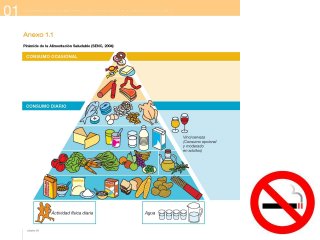
There are several things to remember when it comes to cardio jumping rope. Proper form and technique are key. If you do not follow proper form, you may sustain joint strains or injury. Doing it wrong can make your workouts less effective. Also, it is important to have a baseline for tracking your progress. You don't want to do an exercise routine and not see any results.
High knee
The level of skill required to perform cardio jumping depends on how long the routine takes. Beginners can begin by doing 30 seconds of consecutive jumping, and then progress to 50 repetitions. While jumping rope is difficult to learn, practice and timing will make it easier. Beginers can do a 30-second jump, rest for 60 seconds, and then repeat the sequence 9 times. As with any cardio workout, the technique is a matter of trial and error.
For best results, you should jump for no less than 30 seconds. Alternating feet is a good idea. Jumping higher that the rope's thickness is a waste of energy and will make you tire quicker. Engage your core to create a perfect circle around you body. Make sure your arms are at 90 degrees. Wearing supportive bras during jump rope will increase your comfort. Here are some tips on how to jumprope for cardio.

Alternating feet
Jumping rope for cardio can be improved by switching your feet. This will help you balance, speed, and lightness your foot. Start by elevating your right foot from the ground. Next, jump with your left leg. Next, lower your left foot off the ground and jump with your right foot. Continue this cycle back-and-forth. Ideally, you want to land on your toes after jumping, bouncing quickly and lightly.
Once you have mastered the footwork you can move on the next exercise. For improving your footwork, a classic heel-toe jump rope workout is a great choice. An alternative foot step jumping exercise to burn body fat is also available. This exercise is best done with heavy ropes. Every revolution, move your foot around. Changing the position of your foot each time makes it easier to jump rope for cardio.
The right length rope
Consider your height and fitness goals when choosing the length of rope. Buy a longer rope if you are taller than the rest. Contrarily, if you're shorter, get a longer rope. You can't cut back on the length. Check the gauge before buying a rope to ensure it is the right thickness.
One handle can be used to measure the length of a battle rope. You can do this by standing on one end and using one foot. Bring your hands together so that they are close to your pockets. Keep your elbows bent slightly when you pull on the rope. To find the correct length, point the top of the rope towards your chest. You need to consider your cardio goals and the area in which the rope will be placed. Your sternum should be the same height as the cable. If the cable is more than this, you run the risk that it will hang above your head and fall to the ground.

Creating a baseline to measure your progress
If you want to track your progress while jumping rope for cardio, make a baseline. Note down the times on the previous jumps. You should ensure you are using proper form and that you do a timed trial before moving on to more challenging exercises. While jumping rope for cardio has many advantages, the main goal of this exercise is to increase cardiovascular fitness. To achieve this goal, do a few simple steps.
Firstly, create a baseline for yourself. Get out a rope, and then set a timer in your watch or smartphone. You should try to jump until your muscles are tired. If you can't jump anymore, stop the timer. Keep track of the time that you stopped. This is your baseline. Try out different footwork techniques and patterns to see how far your footwork can take you.
FAQ
How do I create an exercise routine?
You must first create a routine. You need to know what you will do each day and how long you will spend doing it. This helps you plan and prevents procrastination.
Second, make sure that your workouts are varied. It is important not to get bored while exercising. This will cause you to lose interest and make it difficult for you to stick with it.
It is important to track your progress. It is crucial to track how much weight has been lost or gained.
It's easy for people to lose motivation when they start by losing weight. On the other hand, if you gain too much weight, it becomes harder to stay motivated.
So, try to find a balance between gaining weight and losing weight. If you are unhappy about where you are, it will make you less likely to exercise.
How long do I need to fast for weight loss?
The answer isn't as easy as it seems. It is important to take into account a number of factors when deciding the optimal days for fat loss. These are:
-
Your age. Intermittent fasting can be difficult for young people (under 40). This is because they have less time to recover after each fast. If you are older than 60, you might find it difficult to maintain a prolonged period of daily fasting.
-
Your current body composition. A longer period of fasting is more beneficial for those with a lot of muscle mass. You may find shorter fasting more beneficial if your muscle mass is low.
-
How active you are. You may need to increase your fasting time if you exercise often. This will ensure you get enough rest between workouts.
-
Your health history. Additional fasting monitoring may be required for certain medical conditions such as diabetes or heart disease.
-
How do stress and anxiety affect you? Stressful situations can make us eat more. You may need to extend your fasting times in order to avoid this problem.
-
What type of diet do you follow? Certain diets, like ketogenic diets, may require even longer fasting periods.
-
The quality of sleep you receive. The quality of your sleep is also a factor in increased appetite and decreased metabolism. It may take some trial and error before you find the right combination.
-
How much protein you eat. Protein stabilizes blood sugar levels. Therefore, eating more protein could result in lower insulin levels. This would allow you be more consistent in your fasting.
-
People who want to gain weight or lose it will need to fast for longer periods of time than those trying to lose.
-
How many calories do you consume in your fasting windows? Fasting for fewer calories a day can result in more fat loss than fasting to eat more calories a day.
-
Your fitness level. Fasters who are very fit tend to have higher metabolic rates, which allows them to burn more calories throughout the day.
-
Your gender. Men tend to have greater appetites that women, so they may need a longer fast. Women tend to have smaller appetites so they might only need to fast for 20-30 minutes each morning.
-
Your lifestyle. Are you someone who is active? Do you do a lot of exercise each week? Do you have a job that requires you to sit at a desk all the time? These factors could affect how much you should fast.
-
How much money do you spend on food? Eating healthy foods doesn't necessarily mean spending much money on groceries. Whole grains can be substituted for white bread, whole fruits can be purchased instead of candy bars and lean meats over fatty cuts.
-
You need to be able to control your hunger. If you don't want to skip meals, you might not need to fast as long as other people do.
What is the best type of exercise for busy people to do?
You can stay fit by exercising at home. You do not need to join a gym. You can do simple exercises at-home without having to purchase expensive equipment.
All you need is a pair dumbbells, mat, chair, and a timer.
Your most important goal is to keep up your fitness routine. You could lose motivation if your workouts are not consistent for more than a few consecutive days.
It is a great way to get started would be to lift weights three times per semaine. You could do push-ups and pull-ups as well as squats, lunges or push-ups.
Once you are proficient in these movements, you will be able to do other types of exercise, such as running, jumping, skipping and yoga, pilates, dancing, swimming, weight training and tennis.
Choose the one that fits your lifestyle. If you work long hours, you may want to avoid exercise programs that consume too much energy.
If you are a night owl you should exercise during the evening instead of in the early morning.
Be aware of your body and rest when you feel tired.
Is cardio a way to quickly lose weight?
Cardio exercises are great at burning calories but don't help you lose weight. It depends on how fat you have and what exercise you do.
If you're overweight, then cardio exercises may not be enough to burn off all those extra pounds.
It is important to combine them with exercise and diet.
For example, running or jogging are great cardio exercises to help you lose weight quickly. These activities burn more calories that any other form.
However, if you want to gain muscles instead of losing fat, you must perform resistance training. Resistance training is done with no cost weights, machines, elastic bands, or other equipment.
For fast weight loss, combine cardio with resistance training.
You need to combine cardio and resistance training in order to lose weight quickly.
Statistics
- According to a study sponsored by the American Council on Exercise, a person weighing around 140 pounds (64 kg) would burn 108 calories at a 30-minute beginner's Pilates class or 168 calories at an advanced class of the same duration (26). (healthline.com)
- According to Harvard Health, it's estimated that a 155-pound (70-kg) person burns around 167 calories per 30 minutes of walking at a moderate pace of 4 mph (6.4 km/h) (5). (healthline.com)
- A 12-week study in 20 women with obesity found that walking for 50–70 minutes 3 times per week reduced body fat and waist circumference by an average of 1.5% and 1.1 inches (2.8 cm), respectively (healthline.com)
- One study in 9 active men found that HIIT burned 25–30% more calories per minute than other types of exercises, including weight training, cycling, and running on a treadmill (18Trusted Source (healthline.com)
External Links
How To
How to exercise for weight loss
Exercise is one of the best ways to lose weight. Many people do not know how they should exercise. Cardio exercises like running, cycling and swimming should be combined with strength training exercises like pulling ups, pushups and squats. Combining these types of exercises is the best way to lose weight. You can start exercising by getting some friends involved. You can go to a gym, or you can just take a walk around the neighborhood. Whatever type of activity you choose, make sure that you stick with it consistently. It's easy to get off-track when you first begin working out. If things don't go your way, don't lose heart. Just keep going!